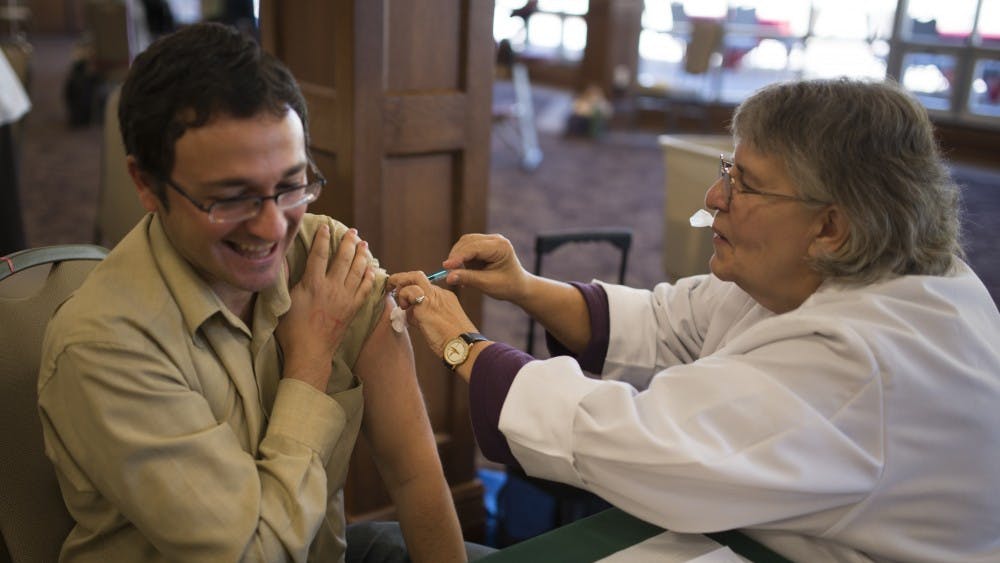As flu season continues, local health experts recommend vaccination as the best way to protect against the illness.
Although people can contract flu infections year round, they are most common September through March.
“The cooler weather and schools starting back up in the fall bring closer contact and increase the risks of infection,” said Amy Meek, community health registered nurse program manager at IU Health Bloomington Hospital.
Amanda Turney, marketing and communications coordinator for the Indiana State Department of Health, said the flu vaccine is carefully formulated by researchers each season to protect against new strains of the virus.
“Some of the things they take into consideration are what influenza viruses are circulating late in the U.S. in the previous season and what strains were causing the most deaths and severe illness,” Turney said.
Susan Laughlin, nurse practitioner for Southern Indiana Physicians, said the flu is often mistaken for a common cold, but there are differences.
“The big difference between the flu and the common cold is the rapid onset,” Laughlin said. “The similar symptoms — muscle aches, fever, fatigue, chills, headache, congestion, runny nose — progress much faster. The cold is more gradual.”
Laughlin said once the flu is identified, there are not many options for treatment.
“We can only offer symptomatic treatment,” she said.
Laughlin said many people are skeptical of the flu vaccine, but she is working to eliminate the misinformation.
“There is a myth that you can get sick from the flu shot, but that isn’t possible because the virus is inactivated,” Laughlin said. “Though, it does take your body about two weeks after receiving the vaccine to build up the antibodies to protect against the flu.”
This year there are new vaccination options.
“The flu vaccine in the past always has only protected against three strains: two strains of Influenza A and one strain of Influenza B,” Meek said. “This is the first year that a quadrivalent option is available, and it protects against an additional strain of Influenza B.”
Meek said most health providers ordered the trivalent vaccine before the quadrivalent vaccine became available, so the majority of vaccines are of the trivalent variety.
According to the Centers for Disease Control and Prevention website, manufacturers have produced between 135 million and 139 million doses of influenza vaccines with only 30 million to 32 million of those doses being quadrivalent.
Meek said both vaccines are effective. She also said this is the first year that Flublok will be available.
Flublok is specially formulated for those with egg allergies that would prevent them from getting the traditional vaccine.
Meek said frequent hand washing, avoiding close contact with those who are sick and covering your nose and mouth when sneezing can help stop the spread of the flu.
“Prevention is the best thing,” Meek said. “No vaccine is 100 percent effective, but it is your best shot at avoiding the flu.”
Follow reporter Brianna Meyer on Twitter @brimmeyer.





